Long-Wave Infrared Supercontinuum Laser
 US Patent 11,815,782
US Patent 11,815,782- 3.5 - 11 μm Wavelength Range (2850 - 910 cm-1)
- Linearly Polarized, Single-Mode, Collimated Output Beam
- >20 mW Output Power
- Purgeable Enclosure
LWIRSC
Long-Wave Infrared Supercontinuum Laser

Please Wait
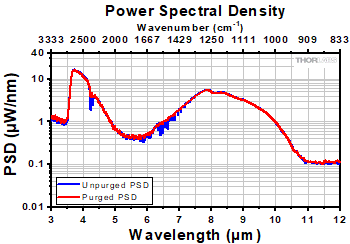
Click to Enlarge
Click Here for Raw Data
The typical power spectral density as a function of wavelength is provided here. Please note that this is a sample spectrum and that small variations may occur from unit to unit. Also note that the spectrum is subject to environmental conditions. We provide two sets of data to illustrate this point. The "purged" data was measured with the OSA207C Optical Spectrum Analyzer, LWIRSC, and most of the beam path in clean dry air (CDA). The "unpurged" data was taken in a typical laboratory environment. Note that the feature at 4.2 μm is due to CO2 absorption, and the fine structure from 5 - 7 μm is due to H2O absorption.
(LWIRSC)
| Key Specifications | |
|---|---|
| Emission Spectral Rangea | 3.5 - 11 μm (2850 - 910 cm-1) |
| Output Power | >20 mW (Full Emission Band) |
| Repetition Rate | 50 MHz (Typical) |
| Beam Output | Collimated; Single Spatial Mode |
| Polarization | Linear, Constant Arbitrary Angle |
| Laser Head Dimensions | 17.92" x 20.68" x 5.86" (455.2 mm x 525.2 mm x 148.7 mm) |
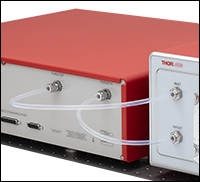
Click to Enlarge
The LWIRSC can be connected to a PACU2 Pure Air Circulator Unit using PACU2T4 tubing to minimize absorption by atmospheric water within the laser head.
Features
- >20 mW Output Power Over 3.5 - 11 µm Range
- Extended Wavelength Range Down to 2 µm Available Upon Request
- Femtosecond Pump Architecture Minimizes Shot-to-Shot Noise
- Based on Intra-Pulse Difference Frequency Generation with No Moving Parts
- High Brightness Single-Mode Achromatically Collimated Output Beam
- Compatible with Fourier-Transform Infrared (FTIR) Spectrometers
- Available with Water Cooling for Vibrationally Sensitive Applications (Contact Tech Sales)
Applications
- Absorption Spectroscopy in the Molecular Fingerprint Region
- Environmental Sensing
- Standoff Detection of Chemical and Biological Threats
- Infrared Spectromicroscopy
- Ultrafast Spectroscopy
- Femtosecond Pulse Generation in the Mid-Infrared
- Optical Coherence Tomography
- Semiconductor Inspection
The Long-Wave Infrared Supercontinuum Laser (LWIRSC) expands Thorlabs' supercontinuum offerings into the long-wave infrared, accessing the molecular fingerprint region. This laser complements our award-winning mid-infrared supercontinuum laser (Item # SC4500, 1.3 μm to 4.5 μm) by extending the wavelength range to cover approximately 3.5 μm to 11 μm (2850 cm-1 to 910 cm-1) with >20 mW of average output power in a single-mode, achromatically collimated beam. This spectral coverage overlaps with a significant portion of the molecular fingerprint region (5 - 15 μm) and enables absorption spectroscopy of molecular vibrations in everything from trace gases to liquids and solid samples. The brightness of the LWIRSC laser exceeds traditional incoherent sources such as Globars and synchrotrons by orders of magnitude. Upon request, the LWIRSC can be modified to extend the spectral range to 2 μm to 11 μm
(5000 cm-1 to 910 cm-1). The extended range overlaps with many additional gas absorption lines and other molecular signatures, including the CO stretch near 2.3 μm, enabling a more comprehensive tool for certain sensing applications.
The LWIRSC architecture is based on the all-fiber femtosecond mid-infrared laser technology developed for our SC4500 laser, followed by intra-pulse difference frequency generation in a nonlinear crystal.a,b This patented technology (US Patent 11,815,782) offers a compact and robust platform which, unlike conventional difference frequency generation sources, does not rely on temporal alignment of optical pulses. As a result, the laser does not include any variable delay lines or moving parts, reducing the cost and complexity of the laser. The repetition rate of 50 MHz makes it compatible with commercially available FTIR spectrometers. It is recommended to use uncoated gold mirrors with the LWIRSC laser. The high-quality single-mode output beam is amenable to fiber coupling; contact
Tech Sales to discuss how this source could be configured.
The laser cavity can be purged via gas inlet and outlet ports on the back panel of the laser head. This gas supply pressure should not exceed 5 PSIG. Attaching a PACU2 pure air circulation unit to the laser using PACU2T4 tubing will purify and dehumidify the air flowing through the laser, minimizing water absorption lines on the output spectrum. Attaching a feed of an inert gas like dry nitrogen or argon can further clean up the spectrum, eliminating absorption lines from trace atmospheric constituents like CO2. The output port of the LWIRSC laser has a KF16 flange which can either be connected to the included zinc selenide window to seal the laser chamber or connected to other purge-capable instruments to create an entirely-sealed beam path. The LWIRSC laser is not designed to operate at below atmospheric pressure.
The high brightness well into the mid-infrared make the LWIRSC laser an ideal source for sensing and spectroscopy applications. These range from environmental sensing of greenhouse gases to standoff detection in the field to spectroscopy in the lab using standard FTIR spectrometers. In addition, this laser can be used as a source of femtosecond pulses in the mid-infrared by filtering the output through a bandpass filter.
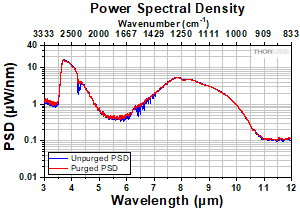
Click to Enlarge
Click Here for Raw Data
The typical power spectral density as a function of wavelength is provided here. Please note that this is a sample spectrum and that small variations may occur from unit to unit. Also note that the spectrum is subject to environmental conditions. We provide two sets of data to illustrate this point. The "purged" data was measured with the OSA207C Optical Spectrum Analyzer, LWIRSC, and most of the beam path in clean dry air (CDA). The "unpurged" data was taken in a typical laboratory environment. Note that the feature at 4.2 μm is due to CO2 absorption, and the fine structure from 5 - 7 μm is due to H2O absorption.
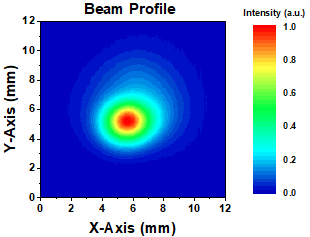
Click to Enlarge
This sample measurement of the beam profile was taken of the full emission band at 1 meter.
| Item # | LWIRSC | ||
|---|---|---|---|
| Parameters | Min | Typical | Max |
| Emission Spectral Rangea | 3.5 - 11 µm (2850 - 910 cm-1) | ||
| Output Power (Full Emission Band, 3.5 - 11 µm) | >20 mW | ||
| Output Power (4.5 - 11 µm) | >8 mW | ||
| Output Power (7.3 - 11 µm) | >4 mW | ||
| Repetition Rate | 48 MHz | 50 MHz | 52 MHz |
| Output Beam Diameter (1/e2) | - | 6 mm | - |
| Full Angle Divergence (θ) | - | <1 mrad | - |
| Polarization | Linear, Constant Arbitrary Angle | ||
| Warm-Up Time | 30 min | ||
| Electrical Requirements | |||
| Input Voltage | 100 - 240 V | ||
| Frequency | 50 - 60 Hz | ||
| Power Consumption | 700 W (Max) | ||
| Environmental Requirements | |||
| Room Temperature Range | 17 °C to 25 °C | ||
| Room Temperature Stability | <3 °C Over 24 Hours | ||
| Physical Specifications | |||
| Gas Purging Inlet and Outlet Connections | For 1/4" (6.4mm) OD, 0.18" (4.6 mm) ID Tubing, PACU2T4 Recommended |
||
| Optical Output Aperture | KF16 Flange | ||
| Dimensions (Laser Head) | 17.92" x 20.68" x 5.86" (455.2 mm x 525.2 mm x 148.7 mm) |
||
| Dimensions (Controller) | 16.98" x 19.02" x 5.25" (431.2 mm x 483.2 mm x 133.4 mm) |
||
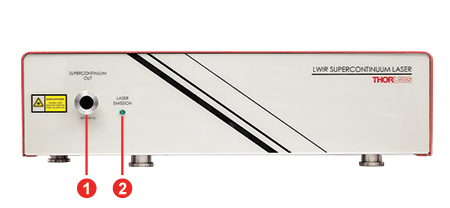
Click to Enlarge
Laser Head Front Panel
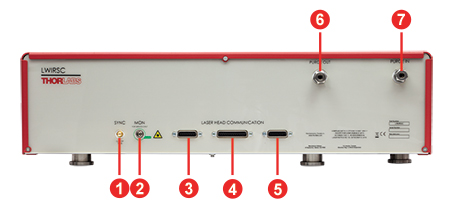
Click to Enlarge
Laser Head Back Panel
| Laser Head Front Panel | |
|---|---|
| Callout | Description |
| 1 | Laser Output Aperture, KF16 Flange |
| 2 | Laser Emission Indicator LED |
| Laser Head Back Panel | |
|---|---|
| Callout | Description |
| 1 | Female SMA Electrical Synchronization port |
| 2 | For Service Only |
| 3 | Female DB15 Laser-Controller Communication Cable Port |
| 4 | Female DB25 Laser-Controller Communication Cable Port |
| 5 | Female DB26 Laser-Controller Communication Cable Port |
| 6 | Purge Outlet Compression Fitting, 0.25" (6.4 mm) Outer Diameter, 0.18” (4.6 mm) Inner Diameter, PACU2T4 Tubing Recommended |
| 7 | Purge Inlet Compression Fitting, 0.25" (6.4 mm) Outer Diameter, 0.18” (4.6 mm) Inner Diameter, PACU2T4 Tubing Recommended |
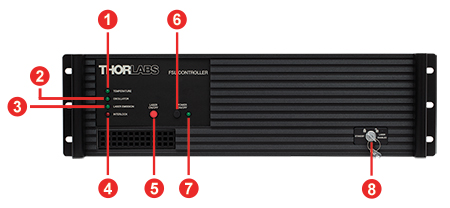
Click to Enlarge
Laser Controller Front Panel
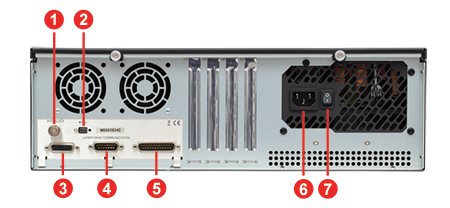
Click to Enlarge
Laser Controller Back Panel
| Laser Controller Front Panel | |
|---|---|
| Callout | Description |
| 1 | Temperature Indicator LED |
| 2 | Oscillator Indicator LED |
| 3 | Laser Emission Indicator LED |
| 4 | Interlock Indicator LED |
| 5 | Laser On/Off Button |
| 6 | Power On/Off Button |
| 7 | Power Indicator LED |
| 8 | Keyed Laser Standby/Enable Switch |
| Laser Controller Back Panel | |
|---|---|
| Callout | Description |
| 1 | Interlock, Female BNC |
| 2 | USB 2.0 Mini-B Port for Software Control |
| 3 | Female DB26 Laser-Controller Communication Cable Port |
| 4 | Male DB15 Laser-Controller Communication Cable Port |
| 5 | Male DB25 Laser-Controller Communication Cable Port |
| 6 | AC Power Cable Port |
| 7 | AC Power On/Off Switch |
Software for the Long-Wave Infrared Supercontinuum Laser
The Long-Wave Infrared Supercontinuum Laser is controlled by a software package that enables turning emission on and off, monitoring the laser status, resetting the oscillator, and adjusting the pump laser current. Click the software button below to download the latest version of the software package.
Software
Version 1.1
An installer for the Windows®-based controller software for the Long-Wave Infrared Supercontinuum Source. This software is required for operation of the laser.
| Minimum System Requirements | |
|---|---|
| Operating system | Windows® 7, 8.1, or 10 (32 Bit or 64 Bit) |
| Processor | >1 GHz |
| RAM | 512 MB |
| Hard Drive Space | 32 Bit: 850 MB 64 Bit: 2 GB |
Pulsed Laser Emission: Power and Energy Calculations
Determining whether emission from a pulsed laser is compatible with a device or application can require referencing parameters that are not supplied by the laser's manufacturer. When this is the case, the necessary parameters can typically be calculated from the available information. Calculating peak pulse power, average power, pulse energy, and related parameters can be necessary to achieve desired outcomes including:
- Protecting biological samples from harm.
- Measuring the pulsed laser emission without damaging photodetectors and other sensors.
- Exciting fluorescence and non-linear effects in materials.
Pulsed laser radiation parameters are illustrated in Figure 1 and described in the table. For quick reference, a list of equations is provided below. The document available for download provides this information, as well as an introduction to pulsed laser emission, an overview of relationships among the different parameters, and guidance for applying the calculations.
|
Equations: |
||||
 |
and |  |
||
 |
||||
 |
||||
 |
||||
Peak power and average power calculated from each other: |
||||
 |
and |  |
||
| Peak power calculated from average power and duty cycle*: | ||||
 |
*Duty cycle ( ) is the fraction of time during which there is laser pulse emission. ) is the fraction of time during which there is laser pulse emission. |
|||
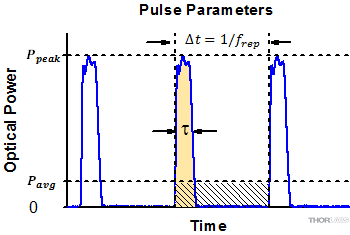
Click to Enlarge
Figure 1: Parameters used to describe pulsed laser emission are indicated in the plot (above) and described in the table (below). Pulse energy (E) is the shaded area under the pulse curve. Pulse energy is, equivalently, the area of the diagonally hashed region.
| Parameter | Symbol | Units | Description | ||
|---|---|---|---|---|---|
| Pulse Energy | E | Joules [J] | A measure of one pulse's total emission, which is the only light emitted by the laser over the entire period. The pulse energy equals the shaded area, which is equivalent to the area covered by diagonal hash marks. | ||
| Period | Δt | Seconds [s] | The amount of time between the start of one pulse and the start of the next. | ||
| Average Power | Pavg | Watts [W] | The height on the optical power axis, if the energy emitted by the pulse were uniformly spread over the entire period. | ||
| Instantaneous Power | P | Watts [W] | The optical power at a single, specific point in time. | ||
| Peak Power | Ppeak | Watts [W] | The maximum instantaneous optical power output by the laser. | ||
| Pulse Width |  |
Seconds [s] | A measure of the time between the beginning and end of the pulse, typically based on the full width half maximum (FWHM) of the pulse shape. Also called pulse duration. | ||
| Repetition Rate | frep | Hertz [Hz] | The frequency with which pulses are emitted. Equal to the reciprocal of the period. | ||
Example Calculation:
Is it safe to use a detector with a specified maximum peak optical input power of 75 mW to measure the following pulsed laser emission?
- Average Power: 1 mW
- Repetition Rate: 85 MHz
- Pulse Width: 10 fs
The energy per pulse:

seems low, but the peak pulse power is:

It is not safe to use the detector to measure this pulsed laser emission, since the peak power of the pulses is >5 orders of magnitude higher than the detector's maximum peak optical input power.
Laser Safety and Classification
Safe practices and proper usage of safety equipment should be taken into consideration when operating lasers. The eye is susceptible to injury, even from very low levels of laser light. Thorlabs offers a range of laser safety accessories that can be used to reduce the risk of accidents or injuries. Laser emission in the visible and near infrared spectral ranges has the greatest potential for retinal injury, as the cornea and lens are transparent to those wavelengths, and the lens can focus the laser energy onto the retina.
Safe Practices and Light Safety Accessories
- Laser safety eyewear must be worn whenever working with Class 3 or 4 lasers.
- Regardless of laser class, Thorlabs recommends the use of laser safety eyewear whenever working with laser beams with non-negligible powers, since metallic tools such as screwdrivers can accidentally redirect a beam.
- Laser goggles designed for specific wavelengths should be clearly available near laser setups to protect the wearer from unintentional laser reflections.
- Goggles are marked with the wavelength range over which protection is afforded and the minimum optical density within that range.
- Laser Safety Curtains and Laser Safety Fabric shield other parts of the lab from high energy lasers.
- Blackout Materials can prevent direct or reflected light from leaving the experimental setup area.
- Thorlabs' Enclosure Systems can be used to contain optical setups to isolate or minimize laser hazards.
- A fiber-pigtailed laser should always be turned off before connecting it to or disconnecting it from another fiber, especially when the laser is at power levels above 10 mW.
- All beams should be terminated at the edge of the table, and laboratory doors should be closed whenever a laser is in use.
- Do not place laser beams at eye level.
- Carry out experiments on an optical table such that all laser beams travel horizontally.
- Remove unnecessary reflective items such as reflective jewelry (e.g., rings, watches, etc.) while working near the beam path.
- Be aware that lenses and other optical devices may reflect a portion of the incident beam from the front or rear surface.
- Operate a laser at the minimum power necessary for any operation.
- If possible, reduce the output power of a laser during alignment procedures.
- Use beam shutters and filters to reduce the beam power.
- Post appropriate warning signs or labels near laser setups or rooms.
- Use a laser sign with a lightbox if operating Class 3R or 4 lasers (i.e., lasers requiring the use of a safety interlock).
- Do not use Laser Viewing Cards in place of a proper Beam Trap.
Laser Classification
Lasers are categorized into different classes according to their ability to cause eye and other damage. The International Electrotechnical Commission (IEC) is a global organization that prepares and publishes international standards for all electrical, electronic, and related technologies. The IEC document 60825-1 outlines the safety of laser products. A description of each class of laser is given below:
| Class | Description | Warning Label |
|---|---|---|
| 1 | This class of laser is safe under all conditions of normal use, including use with optical instruments for intrabeam viewing. Lasers in this class do not emit radiation at levels that may cause injury during normal operation, and therefore the maximum permissible exposure (MPE) cannot be exceeded. Class 1 lasers can also include enclosed, high-power lasers where exposure to the radiation is not possible without opening or shutting down the laser. |  |
| 1M | Class 1M lasers are safe except when used in conjunction with optical components such as telescopes and microscopes. Lasers belonging to this class emit large-diameter or divergent beams, and the MPE cannot normally be exceeded unless focusing or imaging optics are used to narrow the beam. However, if the beam is refocused, the hazard may be increased and the class may be changed accordingly. |  |
| 2 | Class 2 lasers, which are limited to 1 mW of visible continuous-wave radiation, are safe because the blink reflex will limit the exposure in the eye to 0.25 seconds. This category only applies to visible radiation (400 - 700 nm). |  |
| 2M | Because of the blink reflex, this class of laser is classified as safe as long as the beam is not viewed through optical instruments. This laser class also applies to larger-diameter or diverging laser beams. |  |
| 3R | Class 3R lasers produce visible and invisible light that is hazardous under direct and specular-reflection viewing conditions. Eye injuries may occur if you directly view the beam, especially when using optical instruments. Lasers in this class are considered safe as long as they are handled with restricted beam viewing. The MPE can be exceeded with this class of laser; however, this presents a low risk level to injury. Visible, continuous-wave lasers in this class are limited to 5 mW of output power. |  |
| 3B | Class 3B lasers are hazardous to the eye if exposed directly. Diffuse reflections are usually not harmful, but may be when using higher-power Class 3B lasers. Safe handling of devices in this class includes wearing protective eyewear where direct viewing of the laser beam may occur. Lasers of this class must be equipped with a key switch and a safety interlock; moreover, laser safety signs should be used, such that the laser cannot be used without the safety light turning on. Laser products with power output near the upper range of Class 3B may also cause skin burns. |  |
| 4 | This class of laser may cause damage to the skin, and also to the eye, even from the viewing of diffuse reflections. These hazards may also apply to indirect or non-specular reflections of the beam, even from apparently matte surfaces. Great care must be taken when handling these lasers. They also represent a fire risk, because they may ignite combustible material. Class 4 lasers must be equipped with a key switch and a safety interlock. |  |
| All class 2 lasers (and higher) must display, in addition to the corresponding sign above, this triangular warning sign. |  |
|
| Posted Comments: | |
| No Comments Posted |
 Products Home
Products Home




















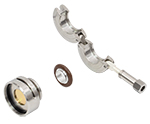
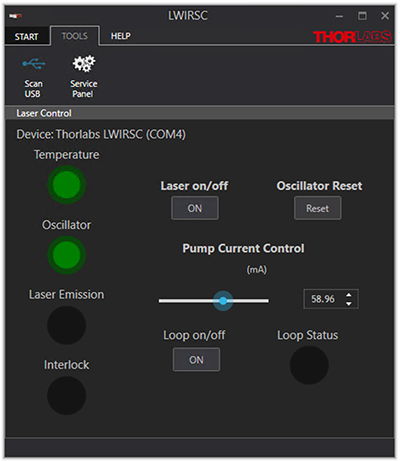

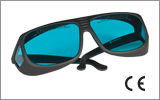
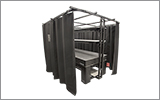
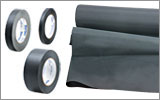
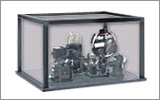
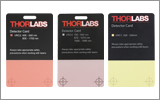
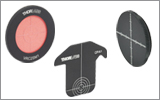
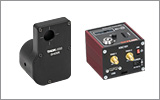
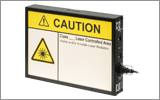
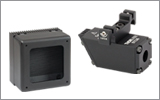

 LW-IR Supercontinuum Laser
LW-IR Supercontinuum Laser